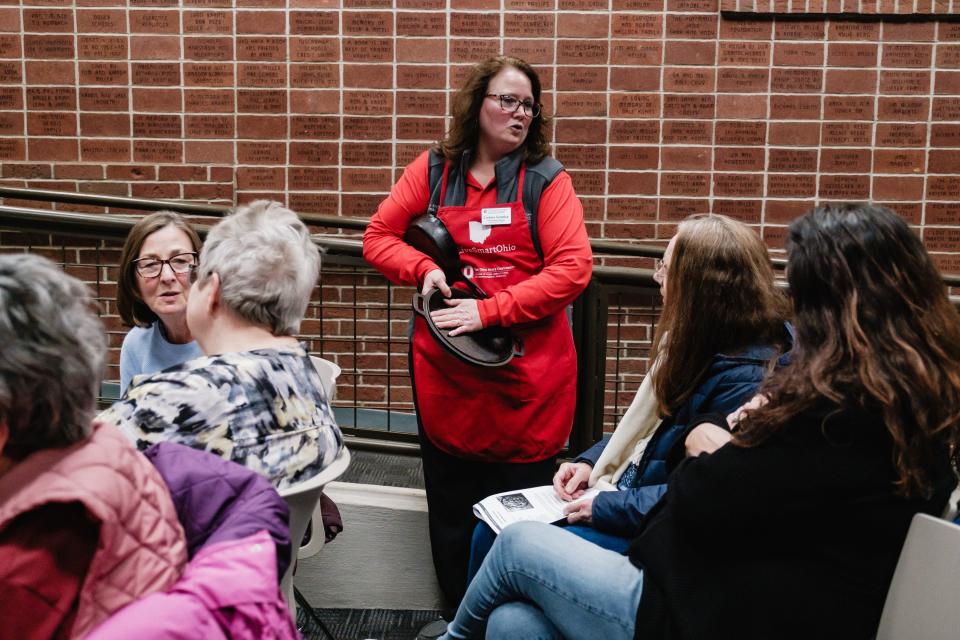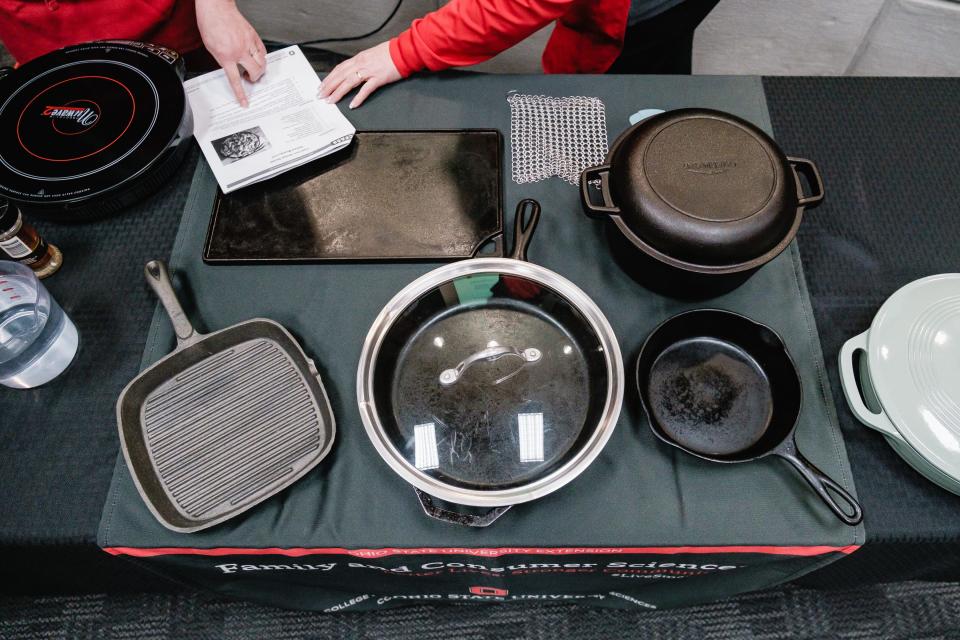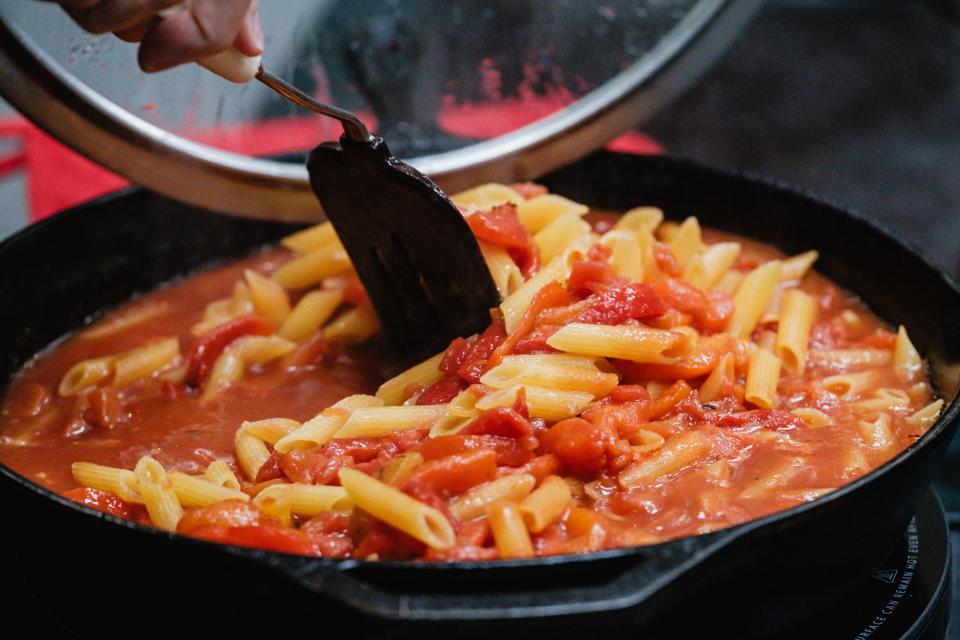Cooking in cast iron: Extension office offers tips on how to keep pans in top condition
DOVER – That old, dusty, rusty-looking cast iron skillet from Grandma’s house just might be worth saving after all.
Corinna Gromley and Kate Shumaker, educators from The Ohio State University Extension Tuscarawas County, recently hosted Cooking in Cast Iron at the Dover Public Library, in which topics such as proper selection, care, tips and tricks were covered.

There are many types of cast iron from which to select depending on your cooking needs, wants, and desires. It all depends on where you are going to be cooking, what you plan to cook, and for how many people, Gromely said as she led the class through a discussion about various example of cookware on display.

While contemporary cast iron is still in production by companies such as Lodge and Le Creuset, the lion’s share still in use were likely produced by smaller independent, early 20th century regional forges in the United States. You likely have seen them in thrift stores, antique stores, swap meets, or even someone’s home, and wondered, ‘Can I use those?’
Quite literally anything can be cooked on a cast iron surface, from bacon and eggs to stews and even breads – it’s not called a Dutch Oven for nothing. But proper care and consideration is key, especially when starting out with a pan that has not been used for quite some time.

Gromely suggests first removing any dust, dirt, rust, or any other gunk with warm soapy water and a chainmail scrubber easily purchased on Amazon. Then the cast iron needs to be thoroughly dried and seasoned. Here’s where cast iron is often maligned as inferior cookware: To maintain a proper level of seasoning, a non-stick surface must be properly established and maintained through use. This is scientifically referred to as polymerization.
To do that, a thin layer of cooking oil with a low smoke point will need to be applied with a paper towel or lint-free cloth to all parts of the iron. What oil? Not olive oil said Gromely. Choose one with a lower smoking point, such as grape seed or flax seed. Then, place it upside down in a hot oven set between 350 and 400 degrees with a sheet of tin foil beneath to catch any drippings. Let it bake for an hour and then turn off the oven and allow the cookware to completely cool. That’s it – you’re done.
The more the cast iron is used and properly cared for, the better the seasoning will get and so might your cooking.
For more events at the Dover Public Library, visit www.doverlibrary.org/events/
T-R staff photographer Andrew Dolph can be reached by phone at 330-289-6072, or by email at adolph3@gannett.com. You can also find him on Instagram @dolphphoto.
This article originally appeared on The Times-Reporter: How to season and care for cast iron cookware

